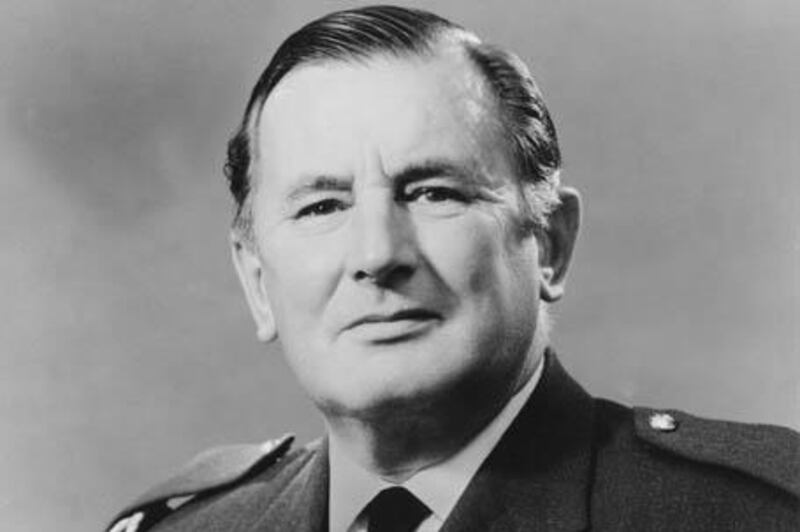A distinguished bomber pilot during the Second World War, Air Chief Marshal Sir Thomas Prickett, was the chief of staff of the air task force responsible for the planning and execution of the military operations during the Suez crisis in 1956. Decades later, in 2002, conscious that history was in danger of repeating itself he wrote an impassioned letter to The Daily Telegraph noting the similarities between the Suez crisis and the situation in Iraq: "The scenario is roughly the same: the leaders of two western democracies obsessed with 'regime' change in a Muslim country. The actors are different - for Eden read Bush, for Nasser read Hussein, for Egypt read Iraq."
At first dubbed Hamilcar, the operation conceived in 1956 was soon renamed Musketeer. Although the three-country scenario was essentially a French initiative, as the major contributor to the invasion, Britain assumed command of the Anglo-French portion of the military operation. General Sir Charles Keightley was named Musketeer commander and Air Marshal Denis Barnett was placed in charge of the air unit with Prickett named his chief of staff. Prickett became one of the first officers to arrive in Cyprus establishing the advanced HQ on October 21, 1956. Strategically the operation failed utterly. There was an international outcry at the aggressive action of the allied forces and the episode contributed to a break in the "special relationship" between the United States and Britain.
"The whole thing was constrained by political considerations; every time we wrote a plan the politicians altered it and said it wasn't possible," Prickett said with hindsight. "I don't think that being in the jobs that I had afterwards, it had any influence on me at all. The only influence it had was to [make me] mistrust all politicians." Ironically, considering the distinguished career he went on to have, Prickett had initially been refused entry to RAF Cranwell owing to the fact that he did not have 20/20 vision. Instead, he spent five years in India working on sugar estates with Begg Sutherland and also served during this period as a trooper with the Bihar Light Horse, of the Indian Army. Only in 1937 did he join the RAF, and worked as a flying instructor before being sent to Egypt in 1941 to fly Wellington bombers with No 148 Squadron.
In 1964, he was appointed commander-in-chief of the Near East Air Force; commander British Forces Near East; and administrator, British Sovereign Bases in Cyprus. While there Prickett became good friends with King Hussein of Jordan, who was a frequent visitor. The two men shared twin passions: aeroplanes and horses. They made a number of flights together; and the king presented his friend with the gift of two polo ponies. On one occasion, Prickett's daughter remembered her father and the king taking to the air, having deliberately left the latter's bodyguards behind on the landing strip, much to their consternation. By the time of his death, Prickett's logbook recording the details of all his flights ran to four volumes. The last entry was made in August 1987.
Prickett returned to Britain three years later and assumed the position of commander-in chief of Transport Command. An apocryphal tale circulated that, during his appointment, he thought his long-range transport aircraft captains would look the part even more than usual were they to be wearing uniform rank badges of squadron leader (although not necessarily substantively promoted to the rank). That thin middle rank stripe of three - the 'scraper' in current RAF slang - earned the name "Tom Prickett's ring of confidence" (borrowing the catchphrase used in advertisements for Colgate toothpaste running at that time).
Prickett was a hugely likeable and sociable man who adapted easily to the different countries he lived in. He always encouraged his two children to assimilate: "Don't mix with the English," he advised them. "Mix with the locals and then you learn something about the culture." In 1957, he was appointed CB and KCB 1965. He was hailed as "a first-class leader whose example has proved inspiring" and commended for his "superb skills". He retired voluntarily from the RAF in 1970 and applied his talents to directing the Duke and Duchess of Richmond's redevelopment programme of their Goodwood estate in Sussex. An international sporting venue covering 11,500 acres of Sussex, its facilities include what Prickett called "the best grass, all-weather airfield in the South of England". Together with a business partner, he also ran Cega Aviation, an airborne medical evacuation service.
Thomas Öther Prickett was born on July 31, 1913 and died on January 23. He is survived by his second wife Shirley Westerman, and the son and daughter of his first marriage to Elizabeth Galbally who died in 1984. * The National






